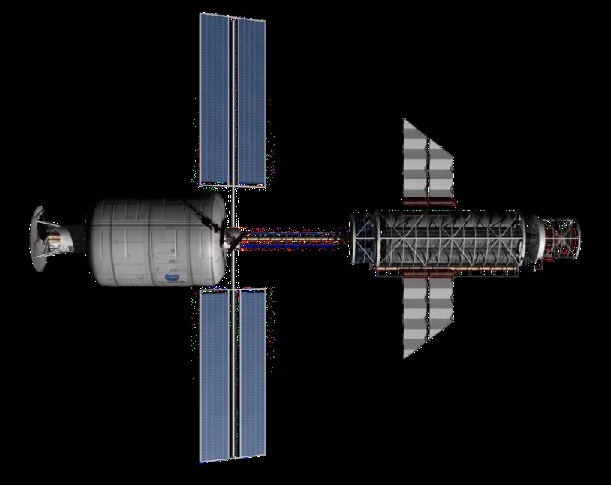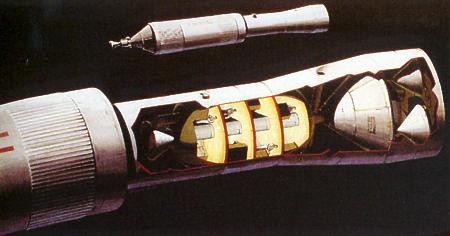While there are perfectly workable concepts for sending humans to Mars by using chemical or nuclear thermal rockets (NTRs), neither option gives spectacular performance. Initial Mass in Low Earth Orbit (IMLEO) is the relevant performance metric and fortunately there’s several quasi-complete designs using both chemical propulsion and NERVA class nuclear thermal propulsion that we can refer to.
First design is Wernher von Braun’s 1969 design, using NERVA class NTRs, which sent a crew of 12 to Mars – and brought them back – in two separate vehicles, landing six on the surface in two 50 ton Mars Excursion Modules (MEMs), all for an IMLEO of 726 tons per vehicle, or 1452 tons total.
Encyclopedia Astronautica: Von Braun Mars Expedition – 1969
The second design, using chemical rockets, was developed by NASA in 1971, with the same crew (6) and MEM (50 tons) as a single Von Braun NTR vehicle. Total IMLEO was 1900 tons.
Encyclopedia Astronautica: NASA Mars Expedition 1971
A more recent design, developed by Robert Parkinson, launched a crew of five towards Mars in three vehicles based on Shuttle-era technology – the European Space Agency’s Spacelab module (which actually flew) and the Orbital Transfer Vehicle (which was studied extensively, but never launched.) Two of the vehicles, Orbiter 1 & 2, massed just over ~210 tons each, while the unmanned Lander Assembly, carrying the MEM, massed 194 tons. Total IMLEO would be 615 tons.
I am deliberately avoiding Robert Zubrin’s “Mars Direct” in this discussion, as it requires In Situ Resource Utilization (ISRU) to fuel up the Mars Return Vehicle, thus skewing the comparison. However incorporating ISRU is, in principle, possible for the design I wish to discuss next: the Fusion Driven Rocket.



